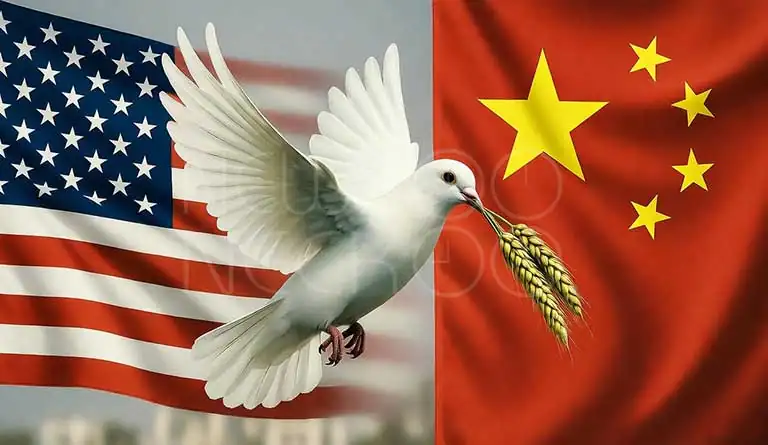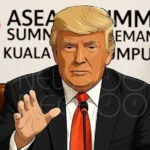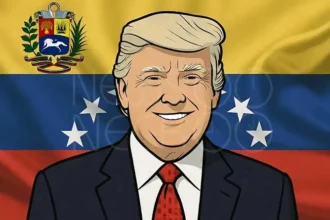U.S China Deal Could Stop a New Tariff War Before It Begins:
For months, the global economy has held its breath, watching as the world’s two largest powers the United States and China inched closer to another economic clash. Threats of 100% tariffs, restrictions on rare earth exports, and tough rhetoric from both sides created the sense that another round of the trade war was just days away.
But this weekend, something shifted.
According to U.S. Treasury Secretary Scott Bessent, the United States and China are now “very close” to reaching a deal that could stop the new tariffs from taking effect. The statement came after two long days of high-stakes talks with China’s top trade negotiator, Li Chenggang, in Kuala Lumpur, Malaysia talks that Bessent described as “productive” and “encouraging.”
A Deal Taking Shape
Bessent revealed in an interview with NBC’s Meet the Press that a “framework” is ready for the much-anticipated meeting between President Donald Trump and Chinese President Xi Jinping, expected to take place later this week in South Korea.
The goal of the meeting, Bessent said, is simple but critical: avoid the new 100% tariffs that Trump has threatened to impose on Chinese goods starting November 1. Those tariffs were meant to pressure China over its plan to tighten export controls on rare earth minerals materials that are essential for making everything from smartphones to fighter jets.
“I’m anticipating that we’ll get a deferral on those rare earth export controls,” Bessent explained. “The Chinese side seems willing to cooperate, and that’s a very positive sign.”
Why Rare Earths Matter
For most people, “rare earths” sound like a technical issue. But in reality, they are the quiet lifeblood of modern technology. China controls almost 90% of the world’s supply, giving it enormous power over industries that rely on advanced electronics, renewable energy, and defense systems.
That dominance has long worried U.S. officials, who see Beijing’s export restrictions as a form of economic leverage. A complete ban or limitation, they argue, could disrupt global supply chains and put American industries at risk.
Bessent said President Trump’s threat of 100% tariffs was designed to push China toward the negotiation table and it seems to have worked. “President Trump gave me strong leverage,” Bessent said. “We’ve reached a very substantial framework that avoids escalation and opens the door to broader cooperation.”
Setting the Stage for a High-Stakes Meeting
President Trump landed in Malaysia on Sunday, marking the first stop of his five-day tour across Asia. His journey will end in South Korea, where he’s expected to meet President Xi face-to-face a moment that could shape the direction of the global economy.
After the talks, Trump struck an optimistic tone, telling reporters, “I think we’re going to have a deal with China.” He added that both leaders have agreed to meet again, possibly in China early next year or in Washington before the next G20 Summit.
The discussion, however, won’t just be about tariffs. Bessent confirmed that fentanyl a deadly synthetic opioid that has devastated communities across the United States will be one of Trump’s top priorities.
“The President is very focused on the fentanyl crisis,” Bessent said. “We’re going to ask China to help us get it under control.”
The U.S. has long accused China of not doing enough to stop the export of chemicals used to make fentanyl. China, for its part, argues that the problem lies with America’s domestic demand for the drug, not its supply chains.
Small Steps, Big Implications
China’s lead negotiator, Li Chenggang, confirmed that both sides had reached a “preliminary consensus” on multiple issues, including extending the current trade truce, controlling fentanyl production, and adjusting export restrictions.
These small agreements might not sound groundbreaking, but experts say they matter. “Every time the U.S. and China sit down and talk instead of retaliate, it helps keep the global economy stable,” said one trade analyst familiar with the discussions.
The U.S. delegation in Malaysia composed of Bessent and U.S. Trade Representative Jamieson Greer has worked to build trust and show flexibility. While both sides still have disagreements, this weekend’s outcome suggests that the risk of a trade war flare-up has eased, at least for now.
A Moment of Cautious Optimism
For global markets, even a temporary truce is good news. Investors had feared that new tariffs would spark inflation and hurt businesses that depend on Chinese imports. A successful meeting between Trump and Xi could calm those fears and give both leaders a political and economic win.
Still, many remain cautious. The last time Washington and Beijing reached a truce, it didn’t last long before tensions reignited. But this time, both sides appear to have stronger reasons to keep the peace: China faces slowing growth, and Trump wants economic stability ahead of next year’s elections.
As Bessent put it, “This is not just about tariffs. It’s about finding a balance between two powerful economies that need each other more than they admit.”
Whether this fragile understanding becomes a lasting peace or just another pause in an ongoing power struggle will depend on what happens when Trump and Xi finally meet later this week.
Author: Yasir Khan
Date: 26 Oct, 2025
For More Updates, Visit Newsneck













